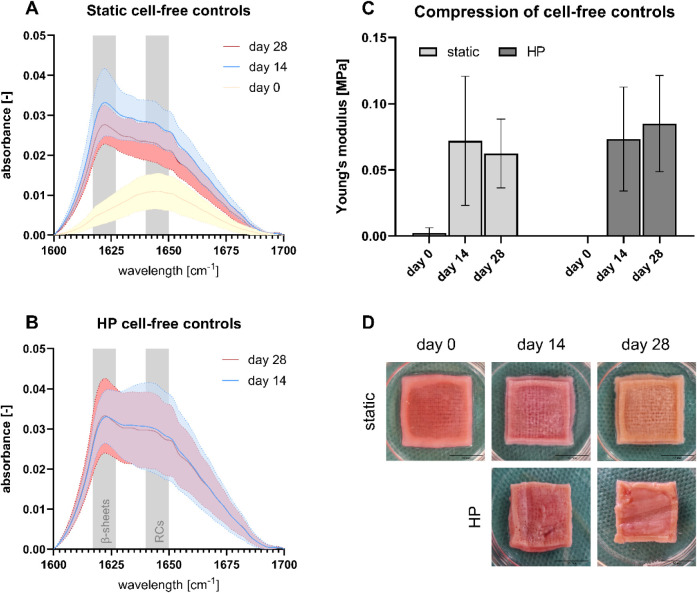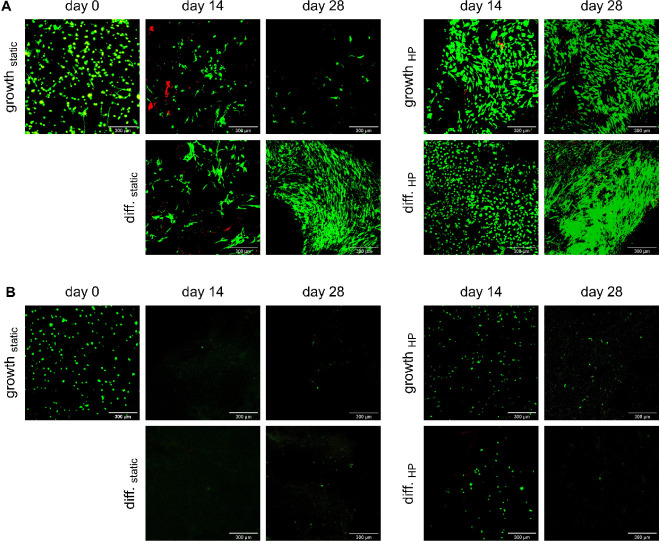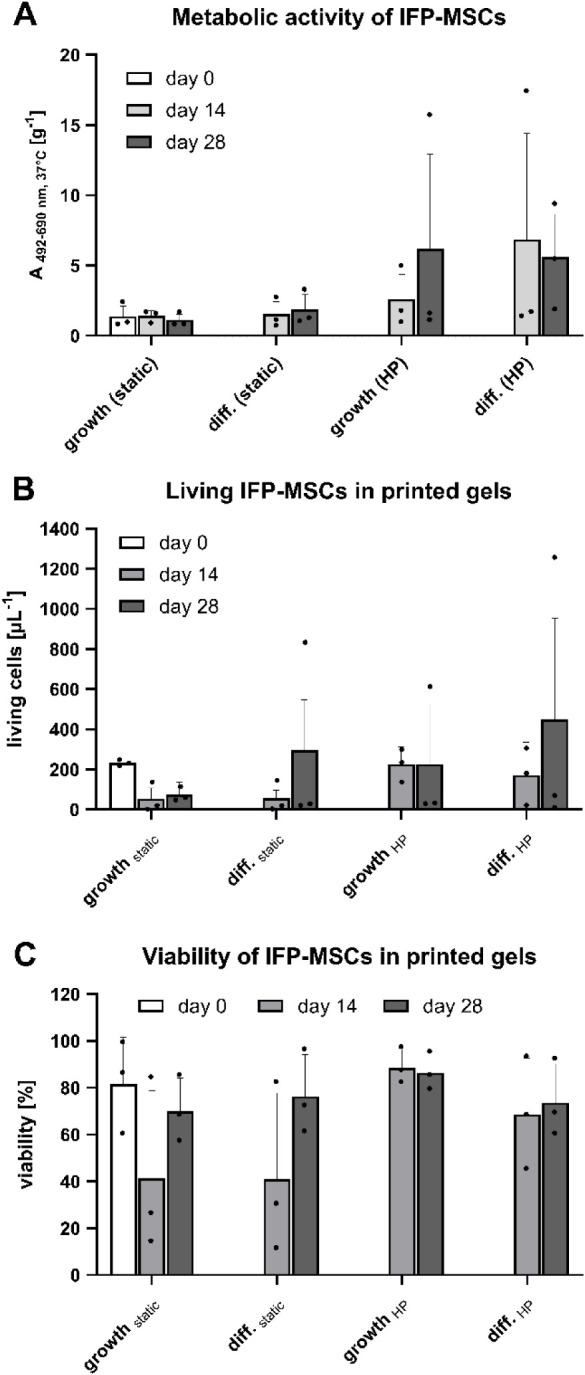Hydrostatic Pressure Enhances Chondrogenic Differentiation of Mesenchymal Stem Cells in Silk Fibroin-Based 3D Bioprinted Hydrogels
IF 5.4
2区 化学
Q1 BIOCHEMISTRY & MOLECULAR BIOLOGY
引用次数: 0
Abstract
The human meniscus experiences mechanical forces and converts axial loads into hoop stresses. Meniscus injuries and meniscectomies can compromise this function, and therefore, meniscus implants are required. To assess their performance in vitro, it is crucial to recreate a physiological environment. Therefore, we investigated the effect of TGFβ-3-supplemented and TGFβ-free cyclic hydrostatic pressure (HP) up to 10 MPa on 3D bioprinted silk fibroin (SF) polymer-based hydrogels. The bioink was seeded with human infrapatellar fat pad-derived MSCs and supplemented with an extracellular matrix and gelatin. We found that HP stimulation did not alter cell-free biomaterial maturation, while it partially stimulated metabolic activity and cell proliferation. Remarkably, TGFβ-3-supplemented HP led to the highest expression levels of chondrogenic markers, followed by TGFβ-3-supplemented unloaded incubation and then TGFβ-free HP. Despite the low cell density, the combined exposure to TGFβ-3 and HP also facilitated localized glycosaminoglycan and collagen deposition, demonstrating promising prospects for future meniscus regeneration.
- Download: Download high-res image (48KB)
- Download: Download full-size image



基于丝素蛋白的生物3D打印水凝胶中静水压增强间充质干细胞的软骨分化。
人体半月板承受机械力并将轴向载荷转化为环向应力。半月板损伤和半月板切除术会损害这一功能,因此需要植入半月板。为了评估它们在体外的表现,重建生理环境是至关重要的。因此,我们研究了补充tgf β-3和不含tgf β-3的循环静水压力(HP)高达10 MPa对生物3D打印丝素(SF)聚合物基水凝胶的影响。该生物链以人髌下脂肪垫来源的间充质干细胞为种子,并辅以细胞外基质和明胶。我们发现HP刺激不会改变无细胞生物材料的成熟,但会部分刺激代谢活性和细胞增殖。值得注意的是,添加tgf - β-3的HP导致软骨标志物的表达水平最高,其次是添加tgf - β-3的卸载培养,然后是不添加tgf - β的HP。尽管细胞密度低,但tgf - β-3和HP的联合暴露也促进了局部糖胺聚糖和胶原的沉积,显示了未来半月板再生的良好前景。
本文章由计算机程序翻译,如有差异,请以英文原文为准。
求助全文
约1分钟内获得全文
求助全文
来源期刊

Biomacromolecules
化学-高分子科学
CiteScore
10.60
自引率
4.80%
发文量
417
审稿时长
1.6 months
期刊介绍:
Biomacromolecules is a leading forum for the dissemination of cutting-edge research at the interface of polymer science and biology. Submissions to Biomacromolecules should contain strong elements of innovation in terms of macromolecular design, synthesis and characterization, or in the application of polymer materials to biology and medicine.
Topics covered by Biomacromolecules include, but are not exclusively limited to: sustainable polymers, polymers based on natural and renewable resources, degradable polymers, polymer conjugates, polymeric drugs, polymers in biocatalysis, biomacromolecular assembly, biomimetic polymers, polymer-biomineral hybrids, biomimetic-polymer processing, polymer recycling, bioactive polymer surfaces, original polymer design for biomedical applications such as immunotherapy, drug delivery, gene delivery, antimicrobial applications, diagnostic imaging and biosensing, polymers in tissue engineering and regenerative medicine, polymeric scaffolds and hydrogels for cell culture and delivery.
 求助内容:
求助内容: 应助结果提醒方式:
应助结果提醒方式:


